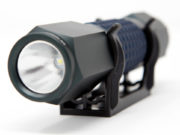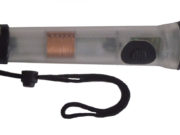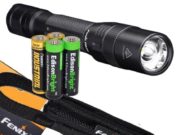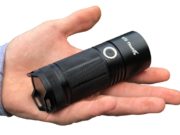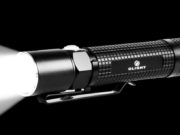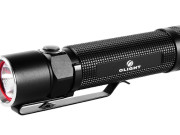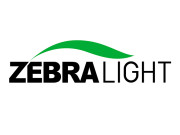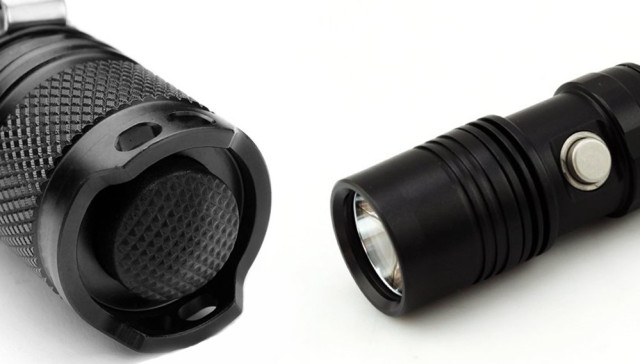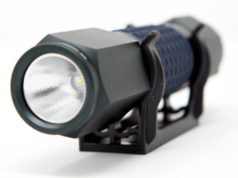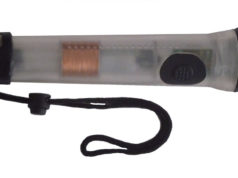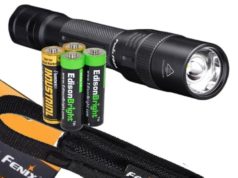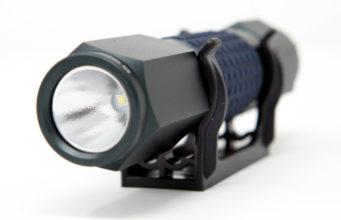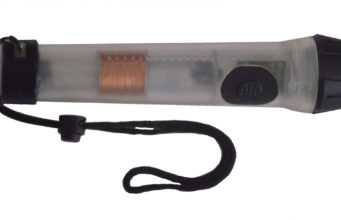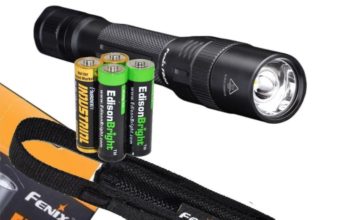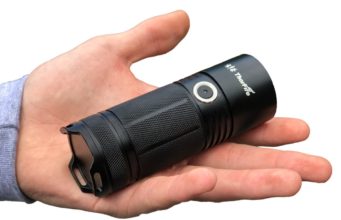There’s no feature on a modern flashlight that divides people quite as much as the positioning of the switch. It seems like it should be a really simple thing to get right, but life is never that easy…
So, are you a tail switch person? Or do you prefer a traditional side switch?
If you don’t even know what I’m talking about, the likelihood is that you’ll prefer a side switch. That’s the type of on-off control that’s placed about a third of the way down the flashlight, away from the head. Typically these days, the switch is button-press, but on some models you can still find the older slider-type switches. This type of switch is intended for people who grip the flashlight with their hand hanging downwards, the thumb facing forwards.
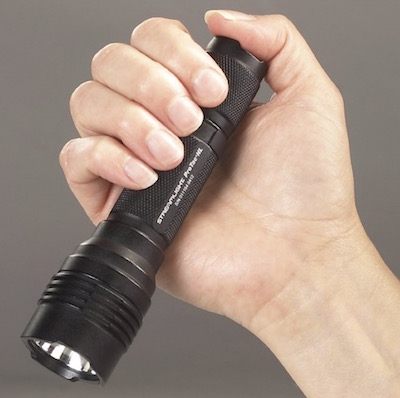
Tail switches, on the other hand, are mounted on the very tail end of the flashlight. The intended grip here is different. Instead of letting your arm dangle, you bend it so that your hand is up at shoulder height or beside your face. This puts the thumb facing backwards, and allows it to rest easily on the tail switch.
Firstly, let’s start by saying that there’s no right or wrong in determining whether a tail switch is superior to a side switch. Ultimately, it’s up to whatever the user of the flashlight feels most comfortable with.
For first-time users, the tail switch can be confusing – if you hand a flashlight like a Streamlight ProTac to someone who’s never used one before, often it’ll take them a few seconds before they can even figure out how to switch it on.
And there are pros and cons in terms of using a flashlight with a tail switch that inexperienced flashlight buyers may be unfamiliar with, so let’s run through them one by one.
Tail switch pros
- You’re naturally holding the flashlight higher and can get a better range of coverage, especially if you’re in an area with obstacles such as bushes or parked cars. Although it can feel slightly unnatural at first to hold the flashlight that way, you’ve got a great range of movement from that high-up position.
- It’s much quicker to find the switch in a hurry in total darkness. Instead of feeling your way around the barrel for a side switch, you can instantly find the button on the end.
- For combat situations – and definitely if you’re carrying a tactical flashlight with a strike bezel – you’re better off with the overhand grip. You can bring your hand (and the flashlight) down in a fast, strong striking motion. It’s far more effective than the ‘stabbing’ motion you get with an underhand grip.
- If you’re mounting your flashlight on a weapon, a tail switch is usually much easier to operate.
- You’re less likely to accidentally turn on the flashlight if it’s in your pocket. Side switches are notorious for getting pressed when you don’t want them to.
- You’ll look like a law enforcement officer.
Tail switch cons
- Depending on the design of the switch, it may make it impossible to stand the flashlight on its tail cap. Certainly, you won’t be able to operate the flashlight while it’s tail-standing.
- It can get uncomfortable to use an overhand grip for a long period of time, particularly if you’re not used to it. Your hand is up high, plus it has the weight of the flashlight to deal with. Obviously, if you get tired you can drop to a conventional underhand grip, but then you lose the easy access to the tail switch. (Some people like to operate tail switches with their pinky finger. If you think this might be an option for you, you’ll need to test the particular flashlight to check that you can actually manage to press the button with your pinky. A lot of tail switches are quite stiff, to avoid accidental presses.)
- You’ll look like a law enforcement officer.
Ultimately, you need to decide what suits you best. On a simple list, the tail switch comes out ahead, in my book. But a flashlight is a personal choice, so try out different types and choose what works best for you.

